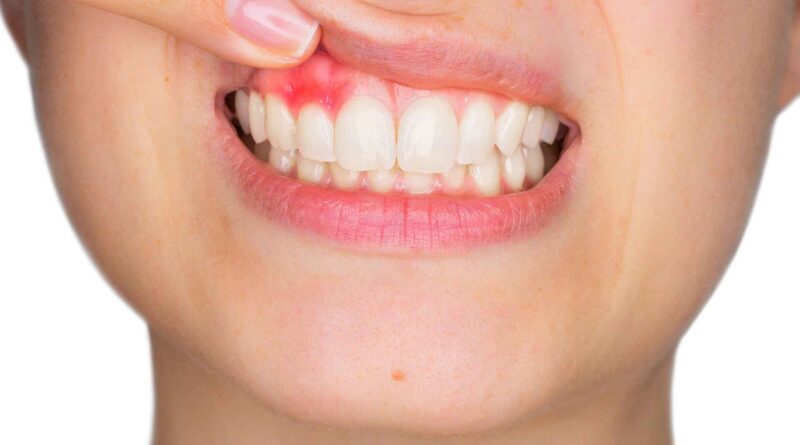What Causes Front Tooth Cavity?
The front tooth cavity is one of the common issues in children and adults. Believe it or not, this is Australia’s 2nd most widespread problem. Almost all people of every age can get a cavity, but there is no specific statement that an age cavity attacks the teeth. Every human can be affected by the cavity issues. The cavity can occur on any tooth surface, and the informative part is that it spreads through the enamel. So, most people try to brush daily, especially at night before going to bed. But still, the cavity can occur because of no reason.
Understanding cavities
Cavities, sometimes called dental caries, are incurable tooth damage brought on by hard surface spoiling. These are among the most prevalent dental conditions worldwide, impacting kids as well. Plaque from the mouth is a sticky film made of starch and sugar that builds up over time and is the first step in creating cavities. If dental hygiene measures such as routine cleanings and examinations are not followed, plaque turns into tartar and erodes the tooth’s outer layer. Tiny apertures or holes in the tooth are the result of this erosion. If treatment is not received, the decay may spread to the dentin and, finally, the pulp, the inner area of the tooth, showing severe pain, infections, and decayed teeth.
Why do cavities occur on the front tooth?
The front tooth cavity attack can occur anywhere for the same reason. People who use more sugary stuff and carbohydrates in their diet can cause dental cavities that are the production of oral bacteria. Thus, containing teeth have more cavities if they are weaker. Adults, especially children who fail to brush their teeth twice daily, can face these symptoms. Another factor that can lead to cavities almost anywhere in your mouth is a dry mouth. Cavities in the front teeth along the gum line or surrounding orthodontic braces are prone to decay.
How is the front tooth cavity identified?
The South African Dental Association (SADA) advises routine check-ups and cleanings at your primary healthcare physician or dentist because you might not have a cavity. It’s advisable to visit your dentist as soon as possible if you discover a cavity in a front tooth. You do not want the illness to get worse. White spots are typically the first sign of a cavity, which eventually turns the tooth pale brown or grey. By then, you ought to have dental care so that a tooth doesn’t turn black or dark brown. You or your child may also feel pain or sensitivity to cold, hot foods, drinks, or sweets. Dentists will extract and fill the damaged tooth with a sturdy restorative material to repair permanent front tooth cavities.
Your dentist may employ tooth-colored composite fillings of plastic resins and finely crushed glass-like components for a more natural appearance. Usually, this treatment requires just one visit. Your dentist may suggest using one of these prostheses to treat a cavity on a front tooth to address any aesthetic concerns.
What caused front tooth cavities?
Even though the molars and premolars in the back of your mouth are more likely to get cavities, decay can also occur in your front teeth. Cavities in the front teeth have comparable reasons to those in other teeth.
Some of the points are:
- Sugary food and sugary drinks
- The food that stuck in teeth
- Forget to brush your teeth
- ignoring the need to floss
- Acid reflux
- Lack of fluoride.
Furthermore, for the front tooth cavity, researchers discovered that early childhood caries (ECC), often known as dental decay in young children, is more common in children than any other ailment. These searches were shown in a US-published Stat Pearls article. Children’s cavities can cause more dental problems and possibly health problems if they are left untreated.
Insufficient flossing, brushing, and dietary factors
To avoid cavities, practice good dental hygiene, which includes brushing regularly? Unfortunately, research indicates that some adults do not adequately maintain dental hygiene, which raises the risk of cavities.
Too much consumption of acidic and sugary meals and drinks might exacerbate tooth damage. These materials give bacteria a conducive environment to grow and produce acids that erode dental enamel.
Options Treatment for Front Tooth Cavity:
Dentists use identical methods for treating front tooth cavity as they use for cavities in other teeth. Restoring the tooth’s function and appearance involves extracting the decaying area. At Lifestyle Smiles, we would determine the severity of the front tooth decay before suggesting one of the following courses of action.
Tooth-colored Fillings
Our dentists usually advise tooth-colored fillings for the majority of front teeth cavities. Compared to conventional amalgam fillings, these porcelain Fillings made of composite resin are more cosmetically attractive since they are natural to match your teeth’ natural color.
Your dentist will file down the injured tooth. Clean the region, and then fill it with a material that matches the color of your teeth. After that, your filling is polished and sculpted to perfectly fit the surrounding tooth structure.
Common Cavity Location
Dental Health Services Victoria notes that molars, or rear teeth, are most frequently affected by tooth decay. The grooves and pits on your molars, which are toward the back of your mouth, can catch food particles. Reaching these back teeth with a toothbrush or floss may be more difficult. Although the front teeth are easier to clean and have a more excellent surface, cavities can still occur. You could have decay in any tooth.
Preventing tooth cavity
Nobody desires to get dental cavities. However, according to Better Health Channel, you can take a few easy steps to lower your tooth decay risk drastically. A decent dental hygiene regimen at home is a great place to start. Remember to floss once daily and clean your teeth twice daily with fluoride toothpaste. Eating a balanced diet and attempting to restrict foods and beverages with added sugars are also crucial. See your dentist regularly for cleanings and examinations. You can be sure that a cavity in your front tooth cavity or your child’s tooth can be removed. You may also lower your family’s chance of developing dental decay in the future and keep everyone’s smiles healthy by adopting a few easy preventative measures.
Final Words
Front tooth cavity can be cured by practicing good dental hygiene, eating a balanced diet, and regularly seeing your dentist for examinations. But, as soon as possible, taking care of any dental concerns you may have, such as a suspected cavity in your front tooth, is critical. Early cavity treatment will help protect the structure of your tooth and the teeth around it and lessen discomfort and the need for more involved operations.




